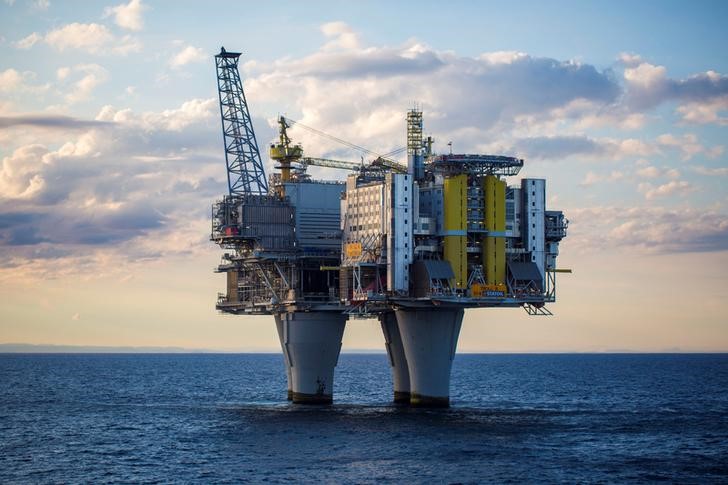By Peter Nurse
Investing.com -- Oil prices soared Tuesday as the market prepares for formal U.S. sanctions against Russian oil imports, adding to concerns about global supply.
By 8:50 AM ET (1350 GMT), U.S. crude futures traded 4.7% higher at $125.05 a barrel, while the Brent contract rose 5% to $129.46. Both benchmarks hit their highest levels since July 2008 on Monday, with Brent hitting $139.13 a barrel and WTI $130.50.
Biden is due to make an announcement at 10:45 AM ET on "Actions to continue to hold Russia accountable for its unprovoked and unjustified war on Ukraine" according to a White House briefing sheet.
Precise details of the planned actions weren't immediately available. However, the measures are unlikely to bring about a total halt to Russian energy exports; German Chancellor Olaf Scholz said on Monday that his country would continue to buy energy from Russia as there were no short-term alternatives available.
U.S. Gasoline RBOB Futures were up 4.3% at $3.7266 a gallon.
The crude market has soared to 14-year highs in the wake of the Russian invasion of Ukraine, with the West retaliating by imposing severe sanctions on Moscow, limiting the amount of business western companies can do with Russia.
However, the energy sector was explicitly left out of the original package of U.S. and European sanctions to avoid damage to Europe's economy. The continent gets around 10% of its oil and a quarter of its natural gas from companies ultimately controlled by Vladimir Putin's government.
This view may be changing, in the U.S. at least, following reports that the United States, the world's biggest oil consumer, will ban Russian oil imports, taking a unilateral stand without the involvement of European allies.
This view was confirmed by Democratic U.S. Senator Chris Coons earlier Tuesday, adding that the announcement may come Tuesday or Wednesday.
“While the U.S. appears to be moving quickly towards a ban, we will need to keep more of an eye on Europe, given it is a significant home for Russian oil, whilst only about 3% of U.S. crude oil imports originate from Russia,” said analyst at ING, in a note. “The self-sanctioning we are seeing at the moment in the oil industry appears to be working almost as well as a ban on Russian oil.”
Russia currently exports around 7 million barrels of crude and oil products daily. And if Europe and the major countries in Asia were to follow the likely American lead and ban these imports, prices could jump substantially, even from these elevated levels.
Russian deputy prime minister Alexander Novak warned that “the surge in prices would be unpredictable. It would be $300 per barrel if not more."
Adding to the bullish sentiment in the market was news of a stumbling block in the talks between the West and Iran over the potential of reviving a 2015 nuclear deal, which could see Washington waiving sanctions on purchases of Iranian oil.
Russian foreign minister Sergei Lavrov stated over the weekend that the Western sanctions over Ukraine had become a stumbling block for a nuclear deal.
“We continue to work to see if we can come back to mutual compliance with Iran on the deal,” said U.S. Secretary of State Antony Blinken earlier Tuesday. “Russia continues to be engaged in those efforts and it has its own interest in ensuring that Iran is not able to acquire a nuclear weapon."
Iran used to be OPEC’s second-largest producer, and an agreement could see the Persian Gulf country restoring around 1 million barrels of daily crude production.
